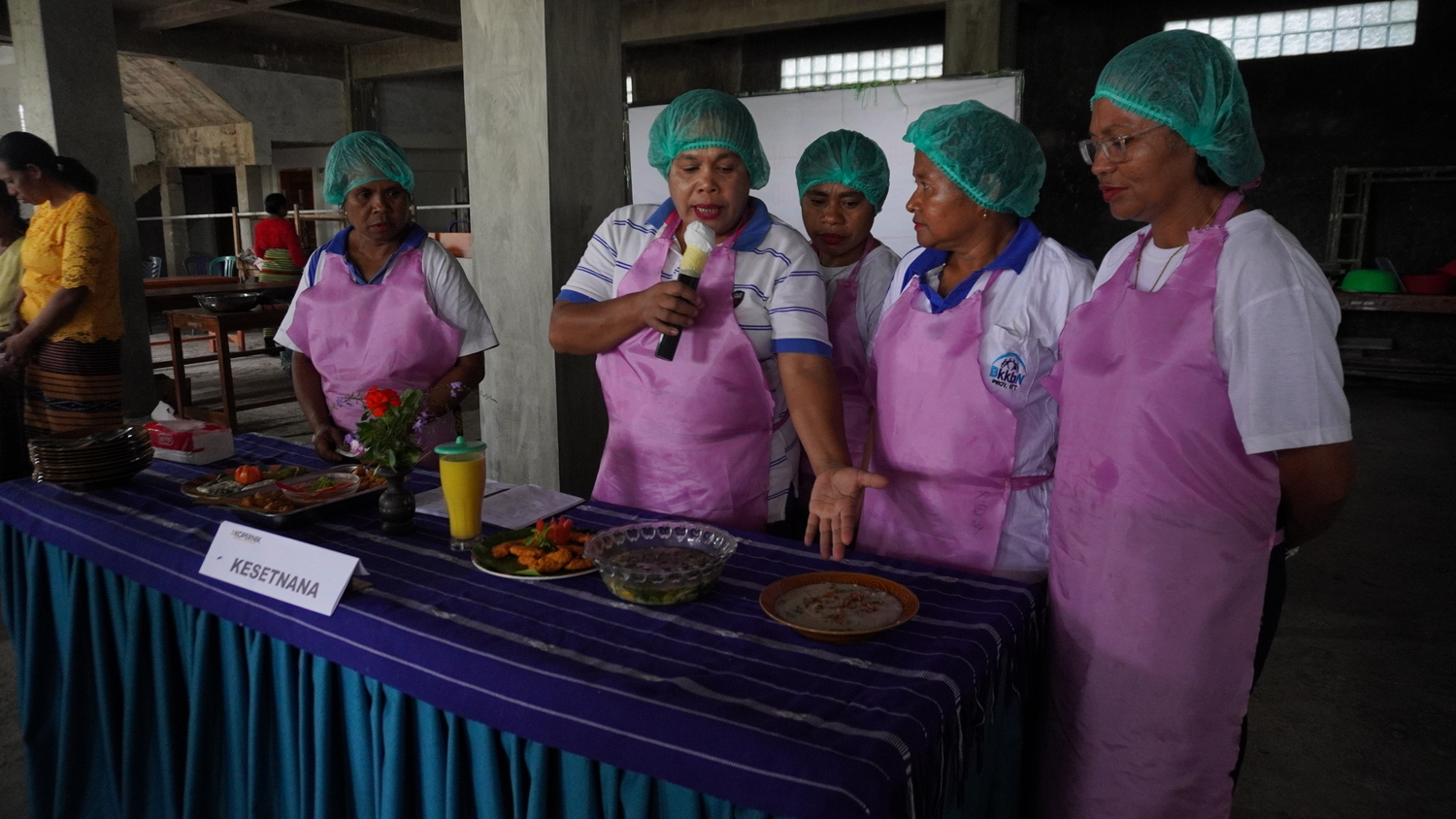In November last year, I had the privilege of witnessing something truly special in So’E, East Nusa Tenggara. The cooking competition organized as part of the PANGAN initiative wasn’t just about food, it became a powerful platform for change. It brought together women from four villages: Nonohonis, Biloto, Kesetnana, and Noinbila, each carrying with them stories, traditions, and an inspiring commitment to nourishing their families better and contributing to the fight against stunting using the power of local food.

Locally sourced ingredients used in the cooking competition.
The cooking competition served as a creative entry point to reintroduce and celebrate local food traditions. More than just a contest, it became a lively platform for communities to showcase their culinary heritage while adding their own unique twist to each dish. The festive and public nature of the competition helped amplify the message, advocating for nutritious, local ingredients in a fun and engaging way.
This competition is part of the broader PANGAN initiative, which supports Indonesia’s national food policies by focusing on reducing stunting and strengthening food security through local, innovative food solutions. PANGAN works to address the critical issue of stunting, particularly in the first 1,000 days of a child’s life, by combining targeted nutrition interventions in the healthcare system with community-driven efforts. These include increasing awareness on exclusive breastfeeding, promoting nutritious local foods, and sharing knowledge to help families make healthier food choices.
This wasn’t just a culinary challenge, it was an act of care, creativity, and resilience. Each dish was packed with flavor, and thoughtfully designed to be nutritious and affordable, using ingredients that are locally sourced and easy to find. Some participants revived childhood recipes with a nutritious twist, while others explored new ways to make local foods more appealing for toddlers and young children. It was a celebration of the knowledge that already lives in these communities and a step toward making that knowledge more actionable for stunting prevention.

A participant from Kesetnana Village presenting their dish along with its nutritional benefits to the judges.
To carry this momentum forward, the recipes, just like in previous years, have been compiled into a cookbook. This collection is more than just a set of cooking instructions; it is a tribute to the creativity and practical wisdom of the communities involved.
The cookbook features 70 thoughtfully curated recipes, gathered through activities that have been running since 2021, including previous cooking competitions and visits to villages, making this cookbook both a labor of love and a catalyst for change. Each page carries the voices of women who are using what’s around them to tackle stunting and food insecurity head-on. These recipes were created with one thing in mind: to make it easier for families, especially mothers to prepare affordable, healthy meals with locally sourced ingredients.
One of the judges, Pdt. Beltje Juliana Sahetapy, who also serves as a pastor at the church where the event took place, shared a message that still echoes in my mind: “The development of new recipes using local food and the use of local ingredients should not stop at this competition. It needs to become a way of life.” Her words are a powerful reminder that this movement is just beginning.

The final dish from Noinbila Village, featuring oseng-oseng jagung manis, soto ayam kampung, perkedel kacang campur, and a cemilan terong ungu.
Every visit to So’E always leaves me in awe of the rich culinary heritage found in its kitchens. The traditional methods of preparing local ingredients, whether smoked, fermented, or dried, introduce flavors and textures that are both unique and deeply connected to the land. It is a living heritage, one that deserves to be cherished and celebrated.
This cookbook is an invitation to try something new, a call to build a healthier future for children and honor the knowledge passed down through generations. The cookbook is set to be shared with local communities by mid 2025, bringing the wisdom and creativity of the talented women back to the very communities that inspired it. I hope it finds its way into many kitchens, sparking joy and a deeper appreciation for the ingredients that grow close to home and help every child grow strong, nourished, and stunting-free.


